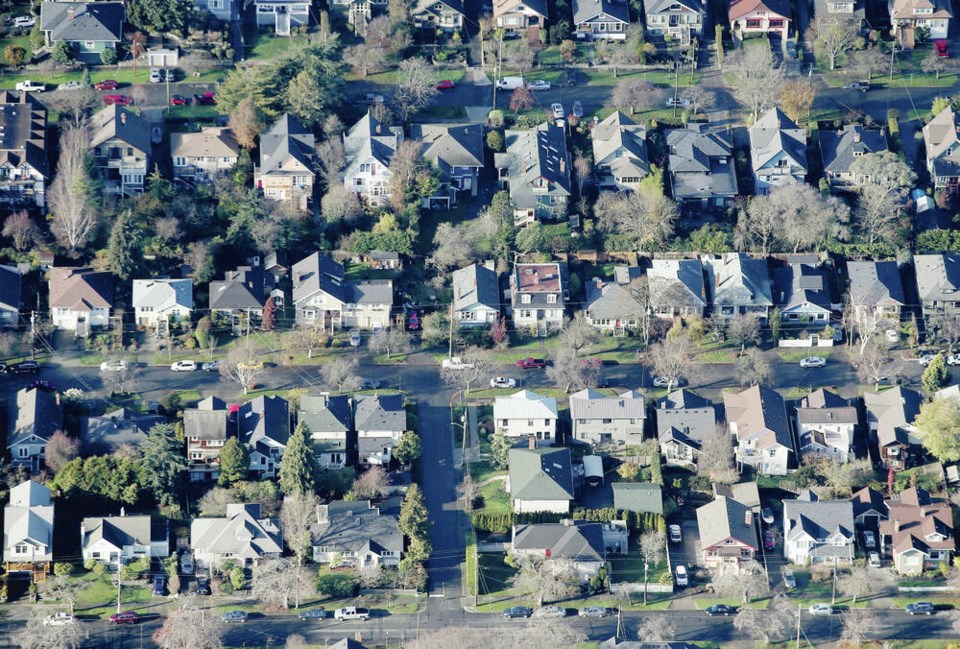How does Victoria Mayor Lisa Helps’s Missing Middle Housing Initiative ensure that it will provide affordable housing to those who really need it?
Without the rationale of affordability, this upzoning initiative is not justifiable. It would soon spur demolitions/demovictions that will displace renters from affordable suites, to be replaced by multiplexes with small apartments or expensive condos (six units on any lot).
Land assembly will allow many unaffordable townhouses at the end of every block and perhaps mid-block (up to 12 units). Suggested increases in height are three metres, and in site coverage is 40 per cent while open space requirement is only 30 per cent.
There is a suggested decrease in parking requirements to .15 spaces per dwelling. Surrounding neighbours will be up in arms about shadowing, loss of canopy and the inability of service people to park close by.
Although the mayor claims it will not happen overnight, the Missing Middle engagement report notes that a substantial increase in the volume of development permits is expected.
The plan should primarily be for Victoria-based young families who can’t afford our average $1.42-million housing prices. Even the below-market housing ownership price suggested in the report to council is set at only 10 per cent lower than the average market price.
Victoria’s 2012 Official Community Plan was years in the making and was informed by more than 6,000 residents. The online engagement leading to the missing middle report had only 800 participants.
By and large, people living in Victoria’s residential districts are unaware of the implications of this proposal: The diminution to their quality of life and the unpredictable disruptions that will become commonplace in their neighbourhoods.
Changing the OCP so radically should be informed by wide consultation throughout the communities.
In fact, the missing middle report should be an election issue in October so that all voters can provide informed consent. Otherwise, the suggested changes are undemocratic and should be tabled pending broader consultation.
The prospect of all B.C. residential areas being upzoned by the province after the municipal elections would make more sense. Were the whole province to be upzoned, rather than just Victoria, land inflation could be much better controlled.
And it would also be better if new housing was built around transportation hubs and corridors as proposed by the province, rather than in three so-called “low density” neighbourhoods as proposed in Victoria, where developers can make huge profits of more than 100 per cent on multiplexes and townhouses.
A lot of the pressure on Victoria residential properties is coming from investors. The Globe and Mail recently calculated that 22 per cent of buyers in Victoria were investors.
A missing middle strategy should include a means for public housing providers to compete for land with private developers. Unless for-profit, market, single-house replacement is taxed when developers take advantage of the increased density that would be permitted, there will be no opportunity for homeowners and non-profits to create affordable housing.
If the idea is attempted at this uncertain time, it should be restricted to a two-year pilot project. As the Canadian Centre for Policy Alternatives recently advised the City of Vancouver:
“While upzoning is a key piece of the housing puzzle, it is not a panacea. Upzoning must be accompanied by complementary policies — such as a big build-out of non-market housing, supportive financing and rent controls — and linked to planning for public transit and other public services and amenities. Upzoning should thus be viewed as part of a plan to manage housing in the interests of people who live and work in the city and should be accompanied by measures to dampen land speculation and purchases of investment properties.”
The quickest and best way to produce affordable housing for renters in residential areas would be if the City of Victoria and B.C. Housing offered grants to homeowners to build family housing or rental suites in return for guarantees of affordability for 10 years or so. The proposed zoning and policy changes will not create the ground-level affordable housing that is needed — it will only make matters worse, especially for the families of people who work in the city.



